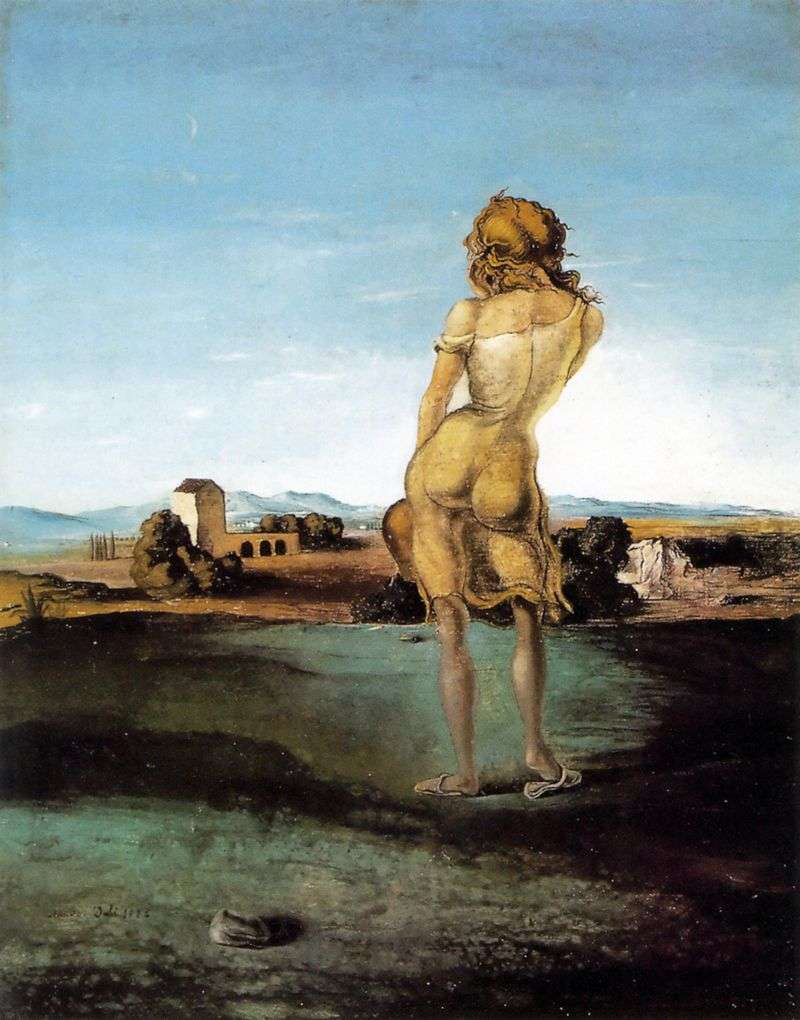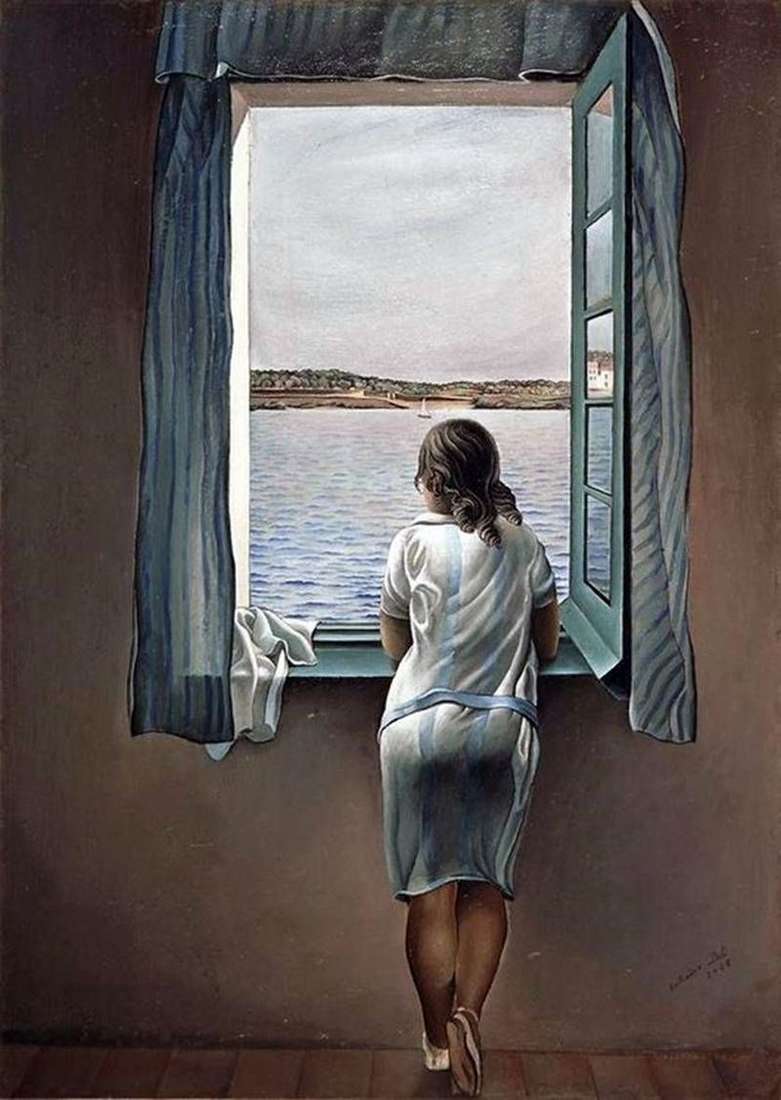
From Ampordan, fenced off from the outside world by mountains. Ampordana with its gentle hills, azure sky, fertile land. With his slender cypresses, which Dali admired in his childhood – and who were with him all his life, growing on almost every canvas. Ampordana with its tram-wind, hurricane wind, which is not in other parts. Tramontana breaks trees, destroys houses, tears and carries away from the sky all the clouds to the last shred, exposing the purest, blinding eyes azure.
Gusts of heavy wind throw sea waves on the coastal rocks, as a sculptor’s cutter, carving out bizarre figures. And the azure, and cypresses, and these whimsical sandstone structures are almost invariable attributes of Dali’s paintings. All this goes from there, from childhood and youth, from Catalonia, Figueros, and Ampurdan. The girl is standing with her back to the viewer. Golden hair falls carelessly on the shoulders, the body is covered with a dress made of fine fabric, more emphasizing the relief of the body, rather than something hiding. On the legs are light shoes without a heel, straps dresses slipping off their shoulders. Her pose is languid, lazy and imposing.
Before it lay a plain with low hills on the horizon. She looks into the distance: either to the church of typical southern architecture, surrounded by several trees, or to a group of cypresses far away from the horizon. The sky is dazzling blue, with rare smears of clouds. The air seems to be shaking from the heat. The picture perfectly conveys the atmosphere of a hot summer day in the south of Catalonia.
 A rider named Death by Salvador Dali
A rider named Death by Salvador Dali Necrophilic source, scoring from the piano on the code by Salvador Dali
Necrophilic source, scoring from the piano on the code by Salvador Dali The girl at the window by Salvador Dali
The girl at the window by Salvador Dali A sleeping woman in the background of a landscape by Salvador Dali
A sleeping woman in the background of a landscape by Salvador Dali Sleep approaches by Salvador Dali
Sleep approaches by Salvador Dali A girl sitting with her back by Salvador Dali
A girl sitting with her back by Salvador Dali Honey is sweeter than blood by Salvador Dali
Honey is sweeter than blood by Salvador Dali Anxious sign by Salvador Dali
Anxious sign by Salvador Dali